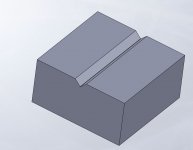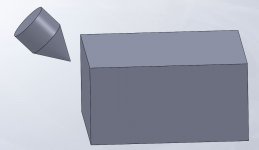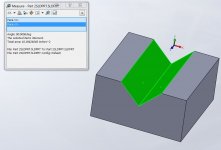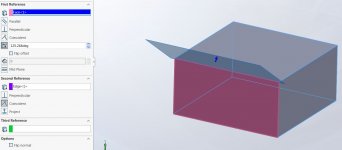Scottl
Diamond
- Joined
- Nov 3, 2013
- Location
- Eastern Massachusetts, USA
I have what I believe is a simple problem but for some reason I am unable to figure the necessary formula required.
I have to machine a 90° included angle in a piece that has an obstruction at one end that prevents using a 90° cutter in the normal vertical position. There is enough clearance below the obstruction to do this with a 60° cutter with the head tilted to the point where the effective cut will be 90° but I am unable to puzzle out the formula to determine the required head tilt. I can approximate the angle using a 60° gauge, a 90° V-Block, and a protractor but since I would be using only sight to determine when the effective angle was 90° I might be off by a degree or two.
Does anyone know the formula for this?
I have to machine a 90° included angle in a piece that has an obstruction at one end that prevents using a 90° cutter in the normal vertical position. There is enough clearance below the obstruction to do this with a 60° cutter with the head tilted to the point where the effective cut will be 90° but I am unable to puzzle out the formula to determine the required head tilt. I can approximate the angle using a 60° gauge, a 90° V-Block, and a protractor but since I would be using only sight to determine when the effective angle was 90° I might be off by a degree or two.
Does anyone know the formula for this?






 )
)


